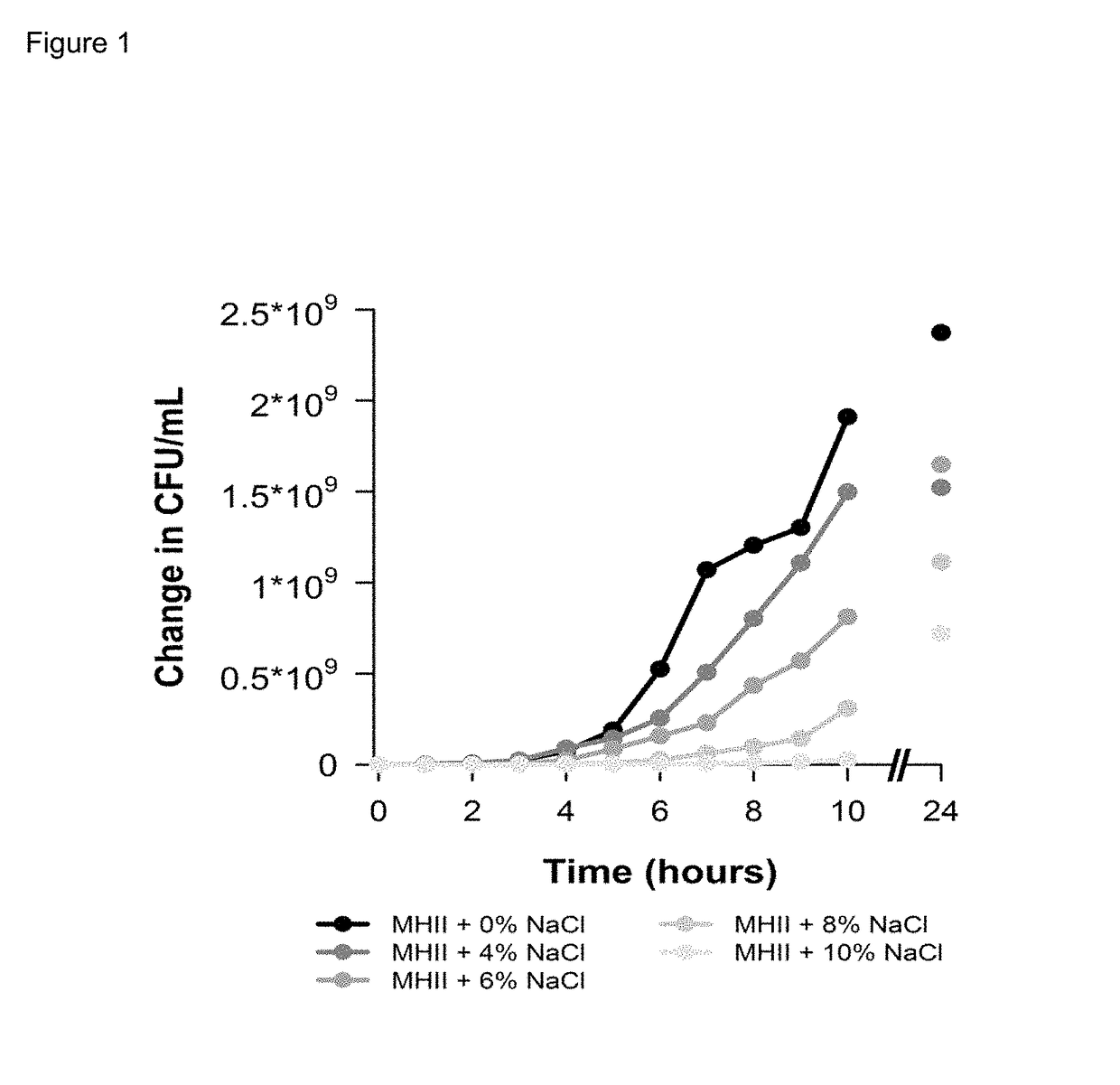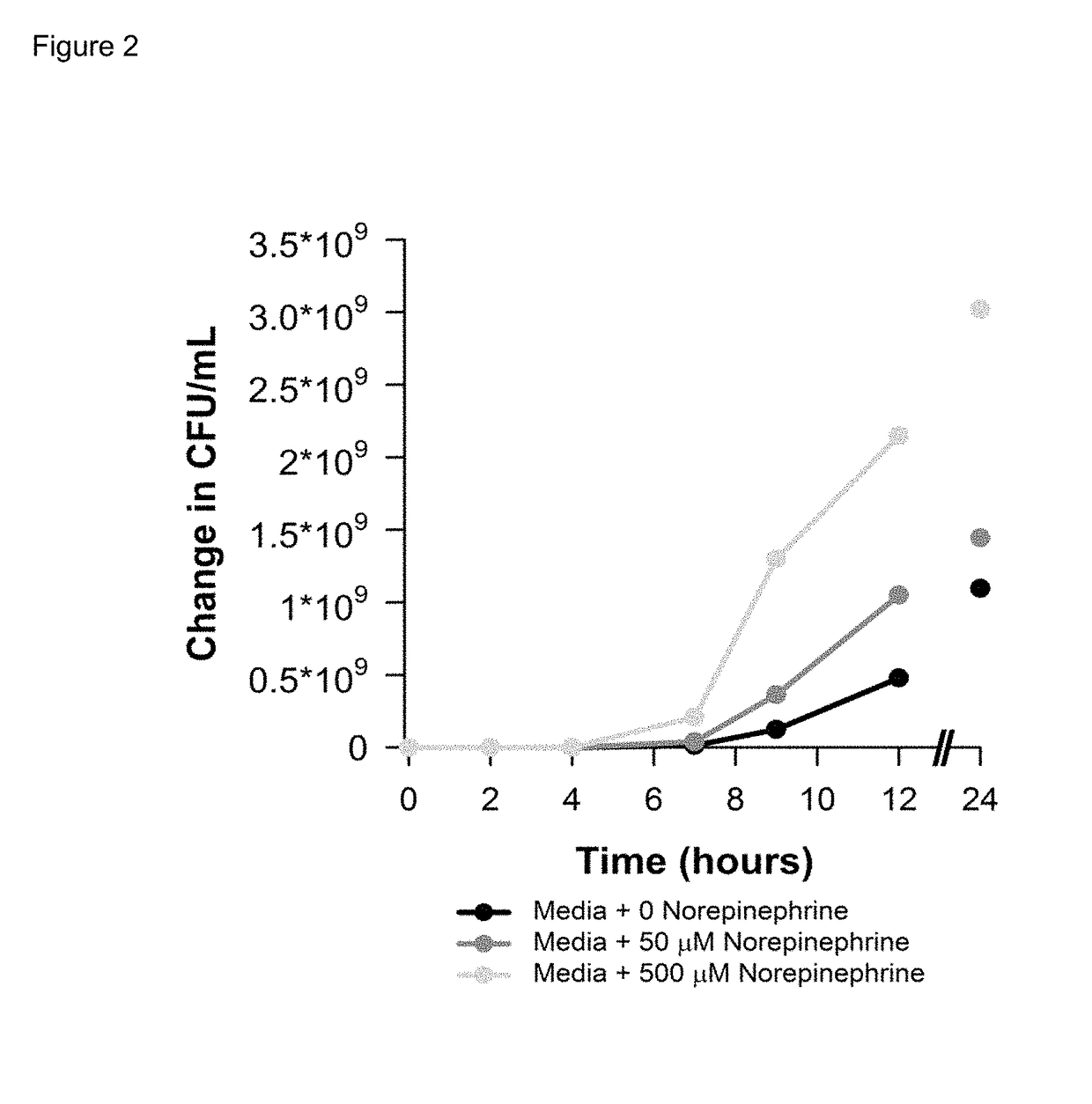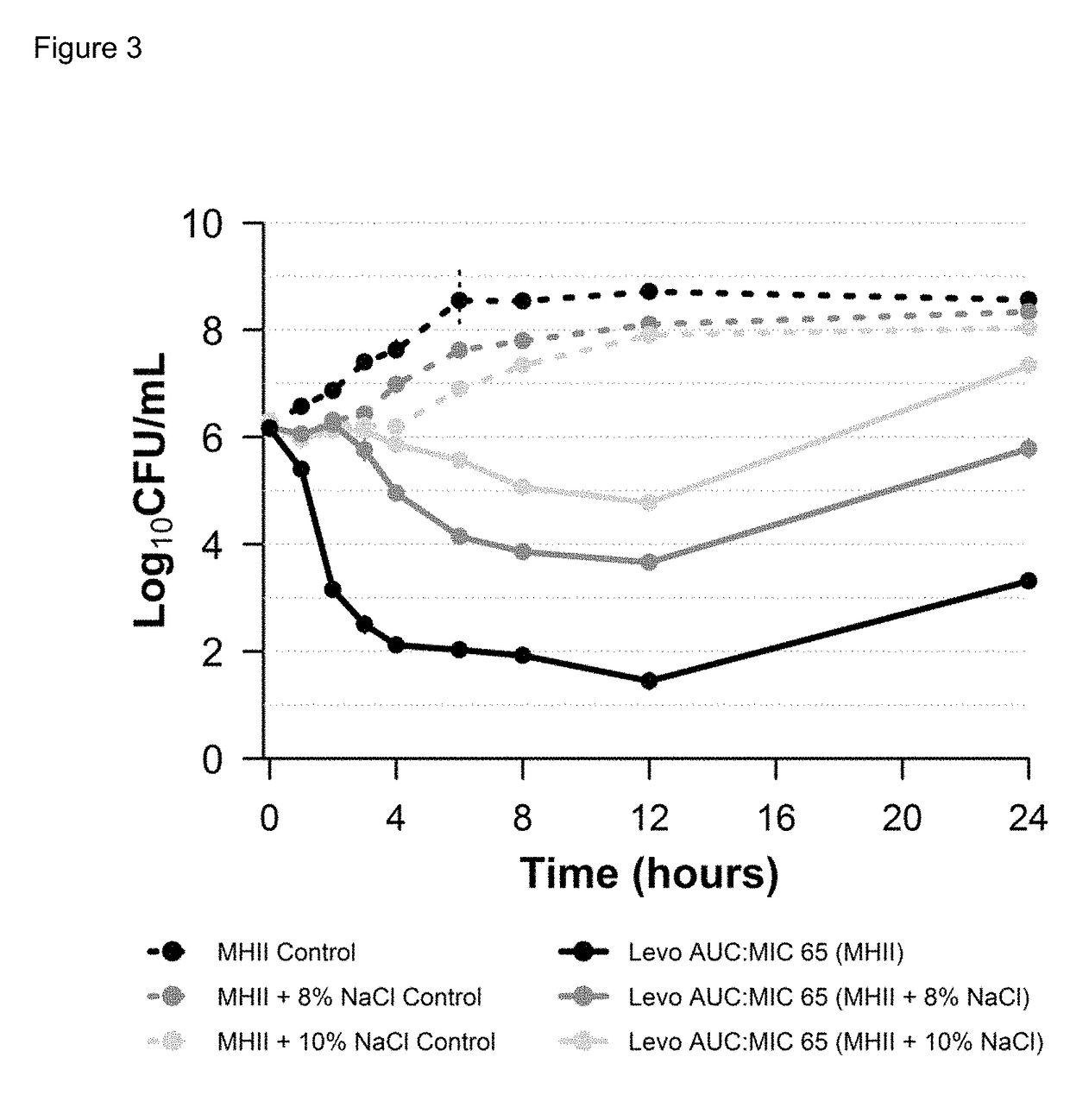Method for shortening anti-infective therapy duration in subjects with infection
a technology for reducing the duration of anti-infective therapy in subjects with infection, which is applied in the direction of antibacterial agents, peptide/protein ingredients, drug compositions, etc., can solve the problem of increasing the risk of drug-related toxicity for patients, increasing the probability of drug-resistance selection, and increasing the duration of anti-infective therapy required to eradicate the infecting pathogen. the effect of increasing the replication rate of the pathogen
- Summary
- Abstract
- Description
- Claims
- Application Information
AI Technical Summary
Benefits of technology
Problems solved by technology
Method used
Image
Examples
example 1
[0052]FIG. 1 shows the impact of sodium chloride concentration on the change in bacterial density (starting inoculum [time 0], 1×106 CFU / mL) in vitro over 24 hours for S. aureus ATCC 29213. Note that as sodium chloride concentration increases, the bacterial replication rate decreases. Similarly, FIG. 2 shows the impact of norepinephrine on the change in bacterial density (starting inoculum [time 0], 1×106 CFU / mL) in vitro over 24 hours for E. coli JMI 21711R. Note that as norepinephrine concentration increases so too does the bacterial replication rate.
example 2
[0053]Not previously recognized is the potential to modulate the intrinsic bacterial replication rate in combination with an antimicrobial agent as a means to increase the rate and extent of bactericidal activity. To this end, slowing of the intrinsic bacterial growth rate in the context of an antimicrobial exposure was found to reduce the bactericidal effect of the antimicrobial agent. More specifically, in a 24-hour one-compartment dynamic in vitro infection model S. aureus ATCC 29213 (levofloxacin MIC, 0.125 mg / L) was exposed to a clinically-effective levofloxacin exposure (free-drug AUC:MIC ratio, 65; administered as a single dose). Each treatment arm and associated control arm differed only in sodium chloride concentration (0, 8, and 10%) within the growth media. FIG. 3 shows the impact of sodium chloride concentration on the change in bacterial density in vitro over the study period relative to no-treatment control arm. Note that as the sodium chloride concentration increases,...
example 3
[0057]It was also found that slowing the intrinsic bacterial growth rate in the context of an antimicrobial exposure reduces the bactericidal effect of the antimicrobial agent and increases the time-to-event. More specifically, in a 10-day hollow-fiber in vitro infection model system S. aureus ATCC 29213 was exposed to a clinically-effective levofloxacin exposure (free-drug AUC, 65; MIC, 0.125 mg / L; AUC:MIC ratio, 520). The treatment arms and associated control arms differed only in sodium chloride concentration (0 and 8%) within the growth media. The initial bacterial inoculum in the model was 1×108 CFU / mL was selected to approximate that observed in high-density infections, such as pneumonia. Moreover, the 10-day study duration was selected to approximate that typical for pneumonia.
[0058]FIG. 5 shows the impact of sodium chloride concentration on the change in bacterial density in vitro over the study period. Note that in the media in which the challenge isolate grew slowly (sodiu...
PUM
| Property | Measurement | Unit |
|---|---|---|
| concentrations | aaaaa | aaaaa |
| structures | aaaaa | aaaaa |
| concentration | aaaaa | aaaaa |
Abstract
Description
Claims
Application Information
 Login to View More
Login to View More - R&D
- Intellectual Property
- Life Sciences
- Materials
- Tech Scout
- Unparalleled Data Quality
- Higher Quality Content
- 60% Fewer Hallucinations
Browse by: Latest US Patents, China's latest patents, Technical Efficacy Thesaurus, Application Domain, Technology Topic, Popular Technical Reports.
© 2025 PatSnap. All rights reserved.Legal|Privacy policy|Modern Slavery Act Transparency Statement|Sitemap|About US| Contact US: help@patsnap.com



